Influence of Domestic Cooking on Quality, Nutrients and Bioactive Substances of Undaria pinnatifida
Abstract
1. Introduction
2. Materials and Methods
2.1. Materials and Chemicals
2.2. Undaria Pinnatifida (UP) Preparation and Cooking
2.2.1. AF Cooking
2.2.2. Microwave Cooking
2.2.3. High Temperature and Pressure (HTP) Cooking
2.3. Sample Preparation
2.4. Analysis of Water State and Distribution
2.5. Determination of Color
2.6. Texture Analysis
2.7. Scanning Electron Microscope (SEM)
2.8. Analysis of Chlorophyll A
2.9. Analysis of Fucoxanthin
2.10. Total Phenol and Polysaccharide
2.11. Amino Acid Analysis
2.12. Statistical Analysis
3. Results and Discussion
3.1. Color of UP under Different Cooking Methods
3.2. Water States in UP Samples Prepared with Different Cooking Methods Evaluated by Low-Field Nuclear Magnetic Resonance (LF-NMR)
3.3. Texture Analysis
3.4. Scanning Electron Microscopy (SEM)
3.5. Bioactive Substances
3.5.1. Total Phenol Content (TPC) and Polysaccharide Content
3.5.2. Chlorophyll a and Fucoxanthin
3.6. Amino Acids
4. Conclusions
Supplementary Materials
Author Contributions
Funding
Data Availability Statement
Acknowledgments
Conflicts of Interest
References
- Lorenzo, J.M.; Agregan, R.; Munekata, P.E.S.; Franco, D.; Carballo, J.; Sahin, S.; Lacomba, R.; Barba, F.J. Proximate Composition and Nutritional Value of Three Macroalgae: Ascophyllum nodosum, Fucus vesiculosus and Bifurcaria bifurcata. Mar. Drugs 2017, 15, 360. [Google Scholar] [CrossRef]
- Afonso, N.C.; Catarino, M.D.; Silva, A.M.S.; Cardoso, S.M. Brown Macroalgae as Valuable Food Ingredients. Antioxidants 2019, 8, 365. [Google Scholar] [CrossRef]
- Wang, L.; Park, Y.-J.; Jeon, Y.-J.; Ryu, B. Bioactivities of the edible brown seaweed, Undaria pinnatifida: A review. Aquaculture 2018, 495, 873–880. [Google Scholar] [CrossRef]
- Pedro, B.; Guedes, L.; André, R.; Gaspar, H.; Vaz, P.; Ascensão, L.; Melo, R.; Luísa Serralheiro, M. Undaria pinnatifida (UP) bioactivity: Antioxidant, gastro-intestinal motility, cholesterol biosynthesis and liver cell lines proteome. J. Funct. Foods 2021, 83, 104567. [Google Scholar] [CrossRef]
- Maeda, H.; Hosokawa, M.; Sashima, T.; Funayama, K.; Miyashita, K. Fucoxanthin from edible seaweed, Undaria pinnatifida, shows antiobesity effect through UCP1 expression in white adipose tissues. Biochem. Biophys. Res. Commun. 2005, 332, 392–397. [Google Scholar] [CrossRef]
- Chen, K.; Roca, M. Cooking effects on chlorophyll profile of the main edible seaweeds. Food Chem. 2018, 266, 368–374. [Google Scholar] [CrossRef] [PubMed]
- Rioux, L.E.; Beaulieu, L.; Turgeon, S.L. Seaweeds: A traditional ingredients for new gastronomic sensation. Food Hydrocoll. 2017, 68, 255–265. [Google Scholar] [CrossRef]
- O’Shea, N.; Arendt, E.K.; Gallagher, E. Dietary fibre and phytochemical characteristics of fruit and vegetable by-products and their recent applications as novel ingredients in food products. Innov. Food Sci. Emerg. Technol. 2012, 16, 1–10. [Google Scholar] [CrossRef]
- Liu, Q.; Tarn, R.; Lynch, D.; Skjodt, N. Physicochemical properties of dry matter and starch from potatoes grown in Canada. Food Chem. 2007, 105, 897–907. [Google Scholar] [CrossRef]
- Perez-Burillo, S.; Rufian-Henares, J.A.; Pastoriza, S. Effect of home cooking on the antioxidant capacity of vegetables: Relationship with Maillard reaction indicators. Food Res. Int. 2019, 121, 514–523. [Google Scholar] [CrossRef]
- Bunea, A.; Andjelkovic, M.; Socaciu, C.; Bobis, O.; Neacsu, M.; Verhe, R.; Camp, J.V. Total and individual carotenoids and phenolic acids content in fresh, refrigerated and processed spinach (Spinacia oleracea L.). Food Chem. 2008, 108, 649–656. [Google Scholar] [CrossRef]
- Murador, D.C.; Mercadante, A.Z.; de Rosso, V.V. Cooking techniques improve the levels of bioactive compounds and antioxidant activity in kale and red cabbage. Food Chem. 2016, 196, 1101–1107. [Google Scholar] [CrossRef]
- Rufián-Henares, J.Á.; Guerra-Hernández, E.; García-Villanova, B. Effect of red sweet pepper dehydration conditions on Maillard reaction, ascorbic acid and antioxidant activity. J. Food Eng. 2013, 118, 150–156. [Google Scholar] [CrossRef]
- Miglio, C.; Chiavaro, E.; Visconti, A.; Fogliano, V.; Pellegrini, N. Effects of different cooking methods on nutritional and physicochemical characteristics of selected vegetables. J. Agric. Food Chem. 2008, 56, 139–147. [Google Scholar] [CrossRef] [PubMed]
- Li, L.; Zhang, M.; Yang, P. Suitability of LF-NMR to analysis water state and predict dielectric properties of Chinese yam during microwave vacuum drying. LWT 2019, 105, 257–264. [Google Scholar] [CrossRef]
- Rana, S.S.; Pradhan, R.C.; Mishra, S. Image analysis to quantify the browning in fresh cut tender jackfruit slices. Food Chem. 2019, 278, 185–189. [Google Scholar] [CrossRef]
- Peng, J.; Yi, J.; Bi, J.; Chen, Q.; Wu, X.; Zhou, M.; Liu, J. Freezing as pretreatment in instant controlled pressure drop (DIC) texturing of dried carrot chips: Impact of freezing temperature. LWT 2018, 89, 365–373. [Google Scholar] [CrossRef]
- Romano, A.; D’Amelia, V.; Gallo, V.; Palomba, S.; Carputo, D.; Masi, P. Relationships between composition, microstructure and cooking performances of six potato varieties. Food Res. Int. 2018, 114, 10–19. [Google Scholar] [CrossRef] [PubMed]
- Fernandes, A.S.; Nogara, G.P.; Menezes, C.R.; Cichoski, A.J.; Mercadante, A.Z.; Jacob-Lopes, E.; Zepka, L.Q. Identification of chlorophyll molecules with peroxyl radical scavenger capacity in microalgae Phormidium autumnale using ultrasound-assisted extraction. Food Res. Int. 2017, 99, 1036–1041. [Google Scholar] [CrossRef] [PubMed]
- Qiu, S.; Shen, Y.; Wu, Z.; Zhang, X.; Ge, S. Effects of algae subtype and extraction condition on extracted fucoxanthin antioxidant property: A 20-year meta-analysis. Algal Res. 2021, 53, 102161. [Google Scholar] [CrossRef]
- Raguraman, V.; AbrahamL, S.; MubarakAli, D.; Narendrakumar, G.; Thirugnanasambandam, R.; Kirubagaran, R.; Thajuddin, N. Unraveling rapid extraction of fucoxanthin from Padina tetrastromatica: Purification, characterization and biomedical application. Process Biochem. 2018, 73, 211–219. [Google Scholar] [CrossRef]
- Sui, Y.; Gu, Y.; Lu, Y.; Yu, C.; Zheng, J.; Qi, H. Fucoxanthin@Polyvinylpyrrolidone Nanoparticles Promoted Oxidative Stress-Induced Cell Death in Caco-2 Human Colon Cancer Cells. Mar. Drugs 2021, 19, 92. [Google Scholar] [CrossRef] [PubMed]
- Shen, P.; Gu, Y.; Zhang, C.; Sun, C.; Qin, L.; Yu, C.; Qi, H. Metabolomic Approach for Characterization of Polyphenolic Compounds in Laminaria japonica, Undaria pinnatifida, Sargassum fusiforme and Ascophyllum nodosum. Foods 2021, 10, 192. [Google Scholar] [CrossRef] [PubMed]
- Li, W.; Wang, J.; Chen, Z.; Gao, X.; Chen, Y.; Xue, Z.; Guo, Q.; Ma, Q.; Chen, H. Physicochemical properties of polysaccharides from Lentinus edodes under high pressure cooking treatment and its enhanced anticancer effects. Int. J. Biol. Macromol. 2018, 115, 994–1001. [Google Scholar] [CrossRef] [PubMed]
- China Food and Drug Administration. Determination of Amino Acid in Food, GB5009; National Health and Family Planning Commission of the People’s Republic of China: Beijing, China, 2016; Volume 124.
- Barrett, D.M.; Beaulieu, J.C.; Shewfelt, R. Color, flavor, texture, and nutritional quality of fresh-cut fruits and veg-etables: Desirable levels, instrumental and sensory measurement, and the effects of processing. Crit. Rev. Food Sci. Nutr. 2010, 50, 369–389. [Google Scholar] [CrossRef]
- Lima, A.; Pereira, J.A.; Baraldi, I.; Malheiro, R. Cooking impact in color, pigments and volatile composition of grapevine leaves (Vitis vinifera L. var. Malvasia Fina and Touriga Franca). Food Chem. 2017, 221, 1197–1205. [Google Scholar] [CrossRef][Green Version]
- Turkmen, N.; Poyrazoglu, E.S.; Sari, F.; Sedat Velioglu, Y. Effects of cooking methods on chlorophylls, pheophytins and colour of selected green vegetables. Int. J. Food Sci. Technol. 2006, 41, 281–288. [Google Scholar] [CrossRef]
- Minguez-Mosquera, M.I.; Gandul-Rojas, B.; GallardoGuerrero, L.; Jaren-Galan, M. Chlorophylls. In Methods of Analysis for Functional Foods and Nutraceuticals; Hurst, W.J., Ed.; CRC Press: Boca Raton, FL, USA, 2002; pp. 159–218. [Google Scholar]
- Akdaş, Z.Z.; Bakkalbaşı, E. Influence of different cooking methods on color, bioactive compounds, and antioxidant activity of kale. Int. J. Food Prop. 2016, 20, 877–887. [Google Scholar] [CrossRef]
- Tijskens, L.M.M.; Schijvens, E.P.H.M.; Biekman, E.S.A. Modelling the change in colour of broccoli and green beans during blanching. Innov. Food Sci. Emerg. Technol. 2001, 2, 303–313. [Google Scholar] [CrossRef]
- Severini, C.; Giuliani, R.; De Filippis, A.; Derossi, A.; De Pilli, T. Influence of different blanching methods on colour, ascorbic acid and phenolics content of broccoli. J. Food Sci. Technol. 2016, 53, 501–510. [Google Scholar] [CrossRef]
- Sun, Q.; Zhang, M.; Yang, P. Combination of LF-NMR and BP-ANN to monitor water states of typical fruits and vegetables during microwave vacuum drying. LWT 2019, 116, 108548. [Google Scholar] [CrossRef]
- Younas, S.; Mao, Y.; Liu, C.; Murtaza, M.A.; Ali, Z.; Wei, L.; Liu, W.; Zheng, L. Measurement of water fractions in freeze-dried shiitake mushroom by means of multispectral imaging (MSI) and low-field nuclear magnetic resonance (LF-NMR). J. Food Compos. Anal. 2021, 96, 103694. [Google Scholar] [CrossRef]
- Adhikari, B.; Howes, T.; Bhandari, B.R.; Truong, V. Stickiness in Foods: A Review of Mechanisms and Test Methods. Int. J. Food Prop. 2001, 4, 1–33. [Google Scholar] [CrossRef]
- Terefe, N.S.; Buckow, R.; Versteeg, C. Quality-related enzymes in fruit and vegetable products: Effects of novel food processing technologies, part 1: High-pressure processing. Crit. Rev. Food Sci. Nutr. 2014, 54, 24–63. [Google Scholar] [CrossRef] [PubMed]
- del Olmo, A.; Picon, A.; Nuñez, M. Preservation of five edible seaweeds by high pressure processing: Effect on mi-crobiota, shelf life, colour, texture and antioxidant capacity. Algal Res. 2020, 49, 101938. [Google Scholar] [CrossRef]
- Tan, M.; Lin, Z.; Zu, Y.; Zhu, B.; Cheng, S. Effect of multiple freeze-thaw cycles on the quality of instant sea cucumber: Emphatically on water status of by LF-NMR and MRI. Food Res. Int. 2018, 109, 65–71. [Google Scholar] [CrossRef]
- Zhang, Q.; Xia, S.; Li, J.; Zhang, X.; Yu, J. Effect of moisture transfer on texture uniformity of cooked rice after heat preservation with electric rice cooker. J. Cereal Sci. 2020, 91, 102862. [Google Scholar] [CrossRef]
- Sergio, L.; Cantore, V.; Spremulli, L.; Pinto, L.; Baruzzi, F.; Di Venere, D.; Boari, F. Effect of cooking and packaging conditions on quality of semi-dried green asparagus during cold storage. LWT 2018, 89, 712–718. [Google Scholar] [CrossRef]
- Salamatullah, A.M.; Ahmed, M.A.; Alkaltham, M.S.; Hayat, K.; Aloumi, N.S.; Al-Dossari, A.M.; Al-Harbi, L.N.; Arzoo, S. Effect of Air-Frying on the Bioactive Properties of Eggplant (Solanum melongena L.). Processes 2021, 9, 435. [Google Scholar] [CrossRef]
- Casquete, R.; Castro, S.M.; Martín, A.; Ruiz-Moyano, S.; Saraiva, J.A.; Córdoba, M.G.; Teixeira, P. Evaluation of the effect of high pressure on total phenolic content, antioxidant and antimicrobial activity of citrus peels. Innov. Food Sci. Emerg. Technol. 2015, 31, 37–44. [Google Scholar] [CrossRef]
- Yang, B.; Jiang, Y.; Wang, R.; Zhao, M.; Sun, J. Ultra-high pressure treatment effects on polysaccharides and lignins of longan fruit pericarp. Food Chem. 2009, 112, 428–431. [Google Scholar] [CrossRef]
- Li, S.; Shah, N.P. Effects of various heat treatments on phenolic profiles and antioxidant activities of Pleurotus eryngii extracts. J. Food Sci. 2013, 78, C1122–C1129. [Google Scholar] [CrossRef]
- Clydesdale, F.M.; Francis, F.J. Pigments. In Food Chem; Fennema, O.R., Ed.; Marcel Dekker: New York, NY, USA, 1976; pp. 417–430. [Google Scholar]
- Teng, S.S.; Chen, B.H. Formation of pyrochlorophylls and their derivatives in spinach leaves during heating. Food Chem. 1999, 65, 367–373. [Google Scholar] [CrossRef]
- Sánchez, C.; Baranda, A.B.; Martinez de Maranon, I. The effect of High Pressure and High Temperature processing on carotenoids and chlorophylls content in some vegetables. Food Chem. 2014, 163, 37–45. [Google Scholar] [CrossRef] [PubMed]
- Mashiane, P.; Mashitoa, F.M.; Slabbert, R.M.; Sivakumar, D. Impact of household cooking techniques on colour, antioxidant and sensory properties of African pumpkin and pumpkin leaves. Int. J. Gastron. Food Sci. 2021, 23, 100307. [Google Scholar] [CrossRef]
- Nie, J.; Chen, D.; Lu, Y.; Dai, Z. Effects of various blanching methods on fucoxanthin degradation kinetics, antiox-idant activity, pigment composition, and sensory quality of Sargassum fusiforme. LWT 2021, 143, 111179. [Google Scholar] [CrossRef]
- Susanto, E.; Fahmi, A.S.; Agustini, T.W.; Rosyadi, S.; Wardani, A.D. Effects of Different Heat Processing on Fu-coxanthin, Antioxidant Activity and Colour of Indonesian Brown Seaweeds. IOP Conf. Ser. Earth Environ. Sci. 2017, 55, 012063. [Google Scholar] [CrossRef]
- Fung, A.; Hamid, N.; Lu, J. Fucoxanthin content and antioxidant properties of Undaria pinnatifida. Food Chem. 2013, 136, 1055–1062. [Google Scholar] [CrossRef]
- Sá, A.G.A.; Moreno, Y.M.F.; Carciofi, B.A.M. Plant proteins as high-quality nutritional source for human diet. Trends Food Sci. Technol. 2020, 97, 170–184. [Google Scholar] [CrossRef]
- FAO/WHO. Dietary protein quality evaluation in human nutrition. In Report of and FAO Expert Consultation; Food and Nutrition Paper; Food and Agriculture Organization of The United Nationsrome: Auckland, New Zealand, 2013; Volume 92, p. 67. [Google Scholar]
- Siahbalaei, R.; Kavoosi, G.; Noroozi, M. Protein nutritional quality, amino acid profile, anti-amylase and anti-glucosidase properties of microalgae: Inhibition and mechanisms of action through in vitro and in silico studies. LWT 2021, 150, 112023. [Google Scholar] [CrossRef]
- Dullius, A.; Fassina, P.; Giroldi, M.; Goettert, M.I.; Volken de Souza, C.F. A biotechnological approach for the production of branched chain amino acid containing bioactive peptides to improve human health: A review. Food Res. Int. 2020, 131, 109002. [Google Scholar] [CrossRef] [PubMed]
- Reis, G.C.L.; Dala-Paula, B.M.; Tavano, O.L.; Guidi, L.R.; Godoy, H.T.; Gloria, M.B.A. In vitro digestion of spermidine and amino acids in fresh and processed Agaricus bisporus mushroom. Food Res. Int. 2020, 137, 109616. [Google Scholar] [CrossRef] [PubMed]
- Rotola-Pukkila, M.; Yang, B.; Hopia, A. The effect of cooking on umami compounds in wild and cultivated mushrooms. Food Chem. 2019, 278, 56–66. [Google Scholar] [CrossRef] [PubMed]
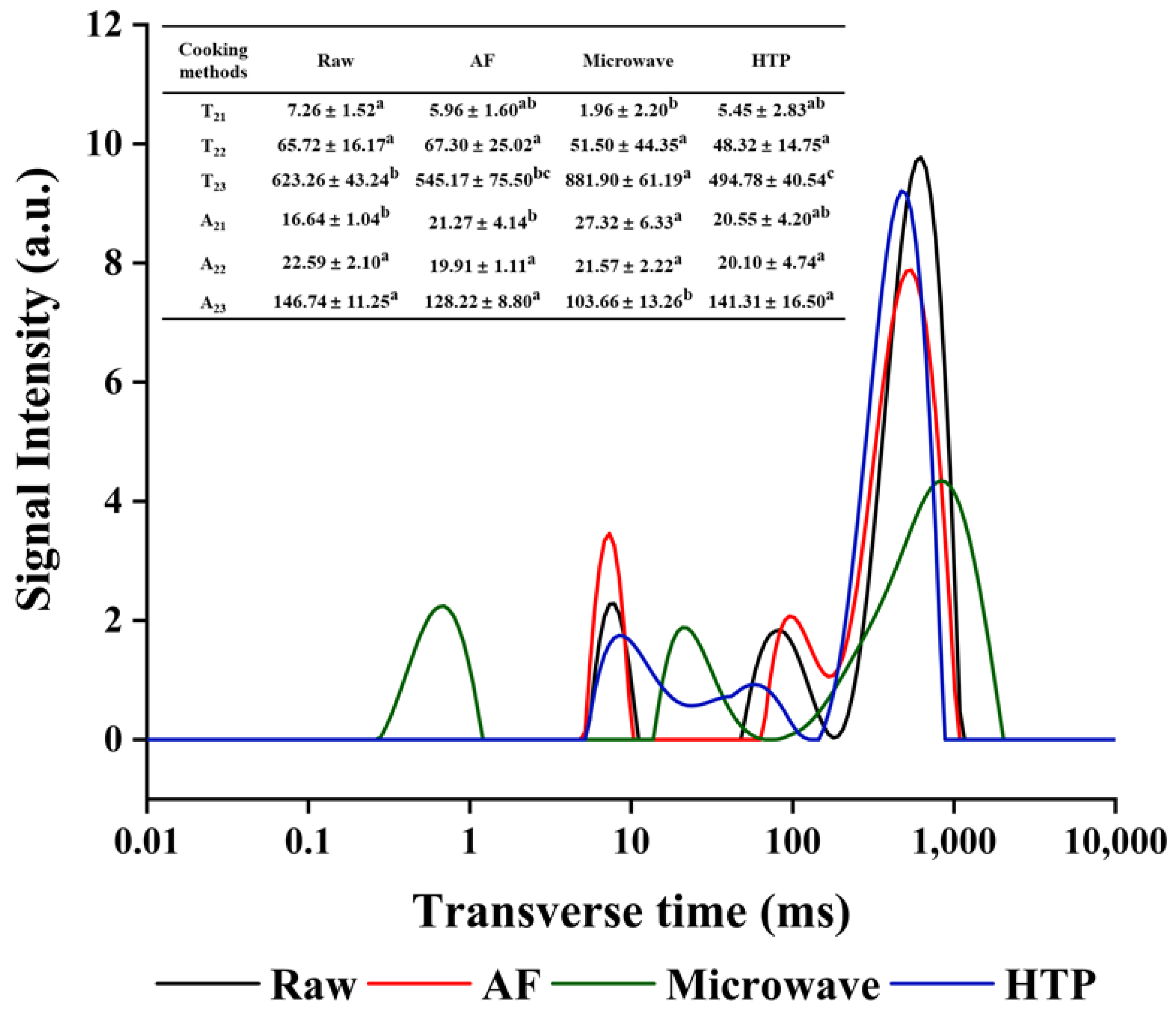
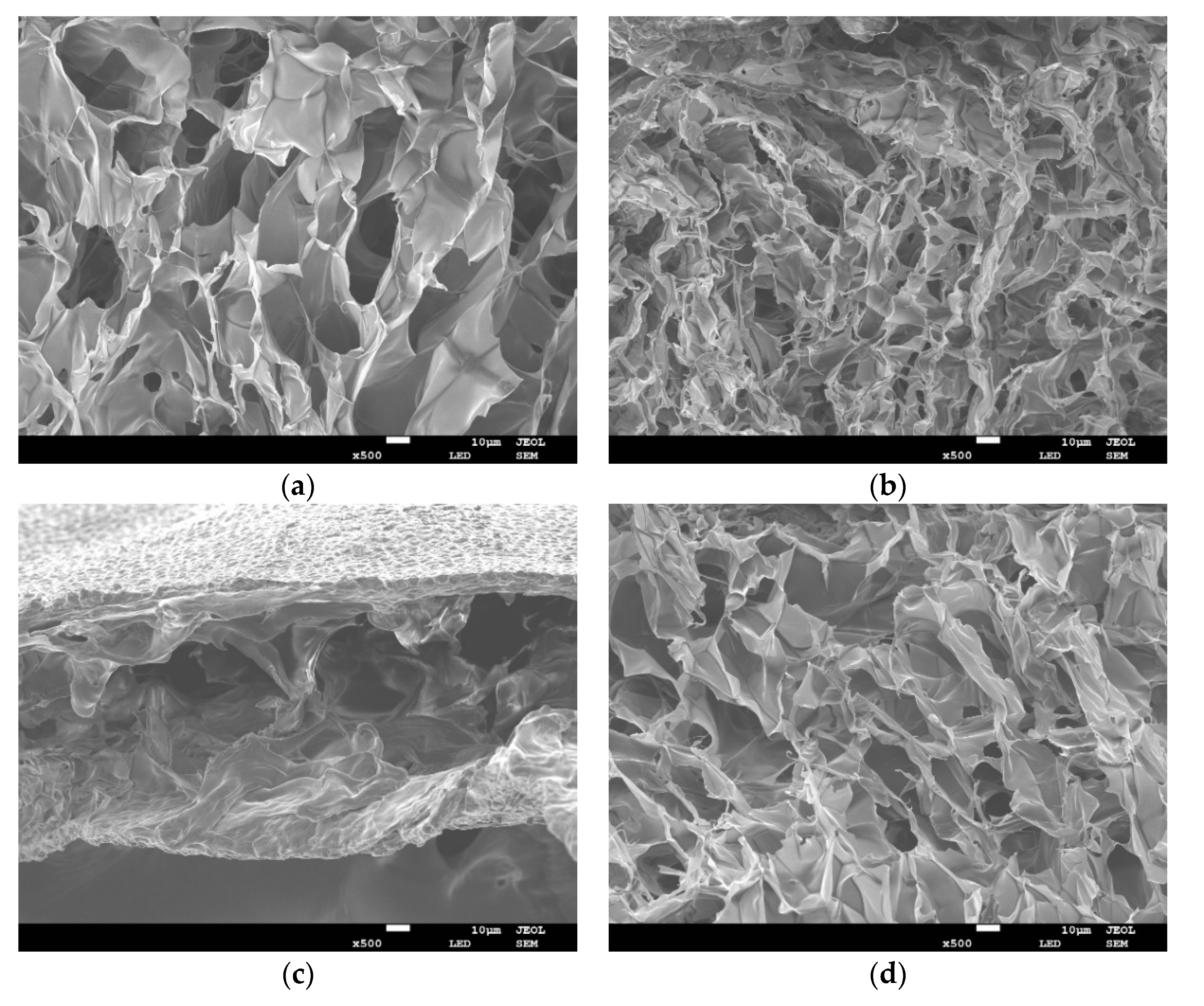
| Color Properties | Raw | AF | Microwave | HTP |
|---|---|---|---|---|
| L * | 26.48 ± 1.63 a | 25.33 ± 1.38 a | 26.91 ± 1.09 a | 25.33 ± 1.30 a |
| A * | −10.63 ± 0.20 a | −7.54 ± 0.35 c | −8.22 ± 0.68 b | −6.76 ± 0.29 d |
| B * | 44.88 ± 2.64 a | 43.05 ± 2.49 a | 45.58 ± 1.82 a | 43.03 ± 3.81 a |
| ∆E | — | 4.29 ± 1.49 b | 3.20 ± 0.66 b | 5.90 ± 1.37 a |
| Samples color | 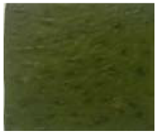 | 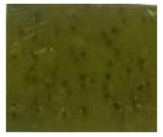 | 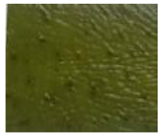 | 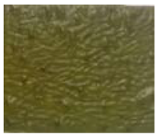 |
| Cooking Methods | Hardness | Springiness | Cohesiveness | Chewiness | Resilience |
|---|---|---|---|---|---|
| Raw | 702.02 ± 22.07 a | 39.11 ± 4.23 a | 0.81 ± 0.06 a | 22,450.92 ± 3717.30 a | 0.80 ± 0.05 a |
| AF | 520.52 ± 53.17 b | 30.43 ± 0.43 c | 0.79 ± 0.03 a | 12,510.89 ± 1515.66 c | 0.71 ± 0.08 b |
| Microwave | 294.61 ± 49.87 c | 21.21 ± 0.33 d | 0.68 ± 0.03 b | 4248.44 ± 873.74 d | 0.49 ± 0.06 c |
| HTP | 522.46 ± 24.26 b | 35.31 ± 2.70 b | 0.85 ± 0.05 a | 15,899.57 ± 2309.78 b | 0.76 ± 0.05 ab |
| Cooking Methods | Total Phenols (mg GAE/g dw) | Polysaccharide (mg GE/g dw) | Chlorophyll a (mg/g fw) | Fucoxanthin (μg/g dw) |
|---|---|---|---|---|
| Raw | 1.61 ± 0.0074 b | 4.76 ± 0.20 a | 24.32 ± 0.10 a | 335.20 ± 9.63 a |
| AF | 1.44 ± 0.0038 d | 3.56 ± 0.27 c | 11.98 ± 1.02 c | 233.63 ± 12.21 c |
| Microwave | 1.50 ± 0.0062 c | 4.17 ± 0.07 b | 18.18 ± 0.41 b | 281.78 ± 17.06 b |
| HTP | 1.69 ± 0.0075 a | 2.39 ± 0.02 d | 17.42 ± 2.43 b | 209.32 ± 8.48 d |
| Cooking Methods | Raw (mg/g dw) | AF (mg/g dw) | Microwave (mg/g dw) | HTP (mg/g dw) |
|---|---|---|---|---|
| Asp | 16.60 ± 1.96 a | 17.27 ± 2.61 a | 14.64 ± 0.68 a | 16.65 ± 1.02 a |
| Thr * | 9.66 ± 1.50 a | 9.51 ± 1.49 a | 8.08 ± 0.40 a | 9.30 ± 0.54 a |
| Ser | 8.64 ± 1.37 a | 8.53 ± 1.34 a | 7.22 ± 0.34 a | 8.25 ± 0.51 a |
| Glu | 20.91 ± 3.31 a | 20.53 ± 3.12 a | 17.56 ± 0.79 a | 19.88 ± 1.23 a |
| Gly | 9.02 ± 1.49 a | 8.74 ± 1.35 a | 7.43 ± 0.37 a | 8.40 ± 0.53 a |
| Ala | 15.02 ± 2.25 a | 14.86 ± 2.20 a | 12.97 ± 0.80 a | 14.47 ± 0.84 a |
| Val * | 11.51 ± 1.79 a | 11.13 ± 1.54 a | 10.17 ± 1.12 a | 10.76 ± 0.63 a |
| Met * | 4.74 ± 0.87 a | 4.15 ± 0.57 ab | 3.36 ± 0.61 b | 3.23 ± 0.47 b |
| Lle * | 6.87 ± 1.35 a | 6.50 ± 1.09 a | 5.41 ± 0.26 a | 6.19 ± 0.43 a |
| Leu * | 11.35 ± 2.03 a | 11.09 ± 1.90 a | 9.18 ± 0.47 a | 10.63 ± 0.74 a |
| Tyr | 5.60 ± 0.86 a | 5.57 ± 0.88 a | 4.58 ± 0.22 a | 5.42 ± 0.31 a |
| Phe * | 11.58 ± 1.79 a | 11.10 ± 1.45 a | 9.39 ± 0.34 a | 10.40 ± 0.66 a |
| Lys * | 8.27 ± 1.31 a | 7.96 ± 1.35 a | 6.62 ± 0.35 a | 7.70 ± 0.53 a |
| His * | 3.73 ± 0.57 a | 3.63 ± 0.52 a | 3.10 ± 0.13 a | 3.46 ± 0.20 a |
| Arg | 8.80 ± 1.44 a | 8.46 ± 1.39 a | 6.98 ± 0.31 a | 8.12 ± 0.53 a |
| ∑AA | 152.30 ± 23.50 a | 149.03 ± 22.65 a | 126.70 ± 6.63 a | 142.87 ± 8.96 a |
Publisher’s Note: MDPI stays neutral with regard to jurisdictional claims in published maps and institutional affiliations. |
© 2021 by the authors. Licensee MDPI, Basel, Switzerland. This article is an open access article distributed under the terms and conditions of the Creative Commons Attribution (CC BY) license (https://creativecommons.org/licenses/by/4.0/).
Share and Cite
Jiang, S.; Wang, Y.; Song, H.; Ren, J.; Zhao, B.; Zhu, T.; Yu, C.; Qi, H. Influence of Domestic Cooking on Quality, Nutrients and Bioactive Substances of Undaria pinnatifida. Foods 2021, 10, 2786. https://doi.org/10.3390/foods10112786
Jiang S, Wang Y, Song H, Ren J, Zhao B, Zhu T, Yu C, Qi H. Influence of Domestic Cooking on Quality, Nutrients and Bioactive Substances of Undaria pinnatifida. Foods. 2021; 10(11):2786. https://doi.org/10.3390/foods10112786
Chicago/Turabian StyleJiang, Shan, Yida Wang, Haolin Song, Jiaying Ren, Baomin Zhao, Taihai Zhu, Chenxu Yu, and Hang Qi. 2021. "Influence of Domestic Cooking on Quality, Nutrients and Bioactive Substances of Undaria pinnatifida" Foods 10, no. 11: 2786. https://doi.org/10.3390/foods10112786
APA StyleJiang, S., Wang, Y., Song, H., Ren, J., Zhao, B., Zhu, T., Yu, C., & Qi, H. (2021). Influence of Domestic Cooking on Quality, Nutrients and Bioactive Substances of Undaria pinnatifida. Foods, 10(11), 2786. https://doi.org/10.3390/foods10112786







